Nolpaza 14s 20 mg film-coated tablets solution / intestinal.
$9.70
Description
The instruction for medical use
of NOLPAZA® medicine
the Trade name
of Nolpaza®
the International unlicensed
name Pantoprazol Lekarstvennaya
the Tablet form, covered with a kishechnorastvorimy cover, 20 mg and 40 mg
Structure
One tablet contains
active agent – a pantoprazol of sodium sexivihydrat of 22.55 mg or 45.10 mg
(it is equivalent to a pantoprazol of 20 mg or 40 mg respectively),
excipients: Mannitolum, krospovidon (type B), sodium carbonate anhydrous, sorbitol (E420), calcium stearate,
structure of a kishechnorastvorimy cover: a gipromelloza (2.4-3.6 mPas), povidone (K25), the titan dioxide (E171), ferrous oxide yellow (E172), propylene glycol, * methacrylic acid – ethyl acrylate % copolymer (1:1) 30 dispersion, a macrogoal 6000, talc
* 30% dispersion except methacrylic acid – ethyl acrylate of copolymer and water contains sodium lauryl sulfate (0.7% in terms of solid substance in dispersion) and polysorbate 80 (2.3% in terms of solid substance in dispersion) as emulsifiers
the Description
of the Tablet of an oval form, covered with a kishechnorastvorimy cover light – yellowish-brown color, slightly biconvex
Pharmacotherapeutic group
Drugs for treatment of the diseases connected with disturbance of acidity. Antiulcerous drugs and drugs for treatment of a gastroezofagalny reflux. Inhibitors of the protonew pump. Pantoprazol
the ATX A02BC02 Code
the Pharmacological
Pantoprazol Pharmacokinetics properties is soaked up quickly, the maximum concentration (for a dosage of 20 mg: 1-1.5 mkg/ml, for a dosage of 40 mg: 2-3 mkg/ml) in blood plasma are reached approximately in 2 – 2.5 hours after administration of drug inside and remain constants after reception repeated dosed Absolute bioavailability makes 77%, meal does not influence AUC indicators (the area under a curve concentration time), the maximum concentration in serum and bioavailability. In the range of doses from 10 mg to 80 mg the kinetics of a pantoprazol in blood plasma has linear character.
98% of a pantoprazol contact proteins of plasma. The volume of distribution is about 0.15 l/kg.
Pantoprazol is almost completely metabolized in a liver. Final elimination half-life makes about 1 hour and clearance about 0.1 l/h/kg. In certain cases time of removal can increase. Because of specific linking of a pantoprazol with a proton pomp of covering cells time of semi-removal does not correlate with a duration of therapeutic effect (suppression of secretion of hydrochloric acid).
The main way of removal of metabolites of a pantoprazol (about 80%) – through kidneys, the rest is removed with a stake. The main metabolite defined in blood plasma and in urine – desmetilpantoprazol, conjugates with sulfate which elimination half-life is only a little more (about 1.5 hours), than at a pantoprazol.
The dose decline at use of a pantoprazol
For patients with cirrhosis is not required from patients with impaired renal function (including at the patients who are on dialysis) (class A and B on classification of Child), elimination half-life is more long (from 3 to 6 hours), AUC is 3-5 times higher, and the maximum concentration in blood plasma is 1.3 times higher, in comparison with healthy.
Patients of advanced age have a small increase in indicators of AUC and Cmax (have no clinical value).
Children
After use of a single oral dose of 20 or 40 mg of a pantoprazol for children at the age of 5 – 16 years indicators of AUC and Cmax were in an interval of the corresponding indicators at adults.
A pharmacodynamics
of Nolpaza®-the substituted benzimidazole which suppresses secretion of hydrochloric acid in a stomach by specific impact on proton a pomp of covering cells.
Pantoprazol is transformed to the active form in the acid environment of covering cells where H+/K+ enzyme inhibits ATFaza and blocks the final stage of synthesis of hydrochloric acid in a stomach. The inhibition depends on a dose and influences both basal, and stimulated secretion of acid. In a peptic ulcer of a stomach and the duodenum associated with Helicobacter pylori, such decrease in gastric secretion increases sensitivity of a microorganism to antibiotics.
After oral administration of Nolpazy® the anti-secretory effect occurs in 1 hour and reaches a maximum in 2 – 4 hours. Does not affect motility of digestive tract. The secretory activity is restored to initial level in 3 – 4 days after the end of reception.
At most of patients the termination of symptoms is reached within
2 weeks. As well as other inhibitors of a proton pomp and inhibitors of a receptor H2, therapy pantoprazoly the acidity in a stomach reduces and, thus, reversible increase in gastrin. Pantoprazol can influence secretion of hydrochloric acid irrespective of stimulation by other substances (acetylcholine, a histamine, gastrin).
Indications
For a dosage of 20 mg:
To adults and teenagers from 12 years is also more senior
– a symptomatic gastroesophageal reflux disease
– for long-term treatment and prevention of a recurrence a reflux esophagitis.
The adult
– prevention of the erosive cankers of a stomach and duodenum caused by intake of non-selective non-steroidal anti-inflammatory drugs (NPVP) in patients with the increased risk and needing continuous treatment of NPVP (See the section special instructions)
For a dosage of 40 mg
to Adults and teenagers from 12 years is also more senior
– a reflux esophagitis
the Adult
– an eradikation of Helicobacter pylori (H. pylori) in a combination with the corresponding antibacterial therapy at patients with the peptic ulcer associated with N. pylori
– a peptic ulcer of a stomach and duodenum
– Zollingera-Ellison’s syndrome and other morbid hyper secretory conditions
the Route of administration and doses
of Nolpaza® of a tablet kishechnorastvorimy should not be chewed or crushed, they should be swallowed entirely to food, washing down with a small amount of liquid.
To adults and teenagers from 12 years
the Symptomatic gastroesophageal reflux disease is also more senior: the recommended dose for intake makes one tablet of 20 mg a day. Relief of symptoms comes usually within 2-4 weeks. If this time is not enough, treatment usually comes in the next additional 4 weeks of therapy. After stopping of symptoms at their repeated emergence it is enough to accept in a dose 20 mg in the mode on demand once a day. Long maintenance therapy is appointed in case at reception on demand it is not possible to reach desirable relief of symptoms.
Reflux esophagitis: the recommended dose for intake makes one tablet of 40 mg a day. In some cases it is possible to double a dose (increase up to 2 tablets on 40 mg a day), especially, when there is no clinical improvement in response to other treatment. The reflux esophagitis is necessary for treatment 4 weeks course of treatment, in case of need therapy is continued by 4 more weeks.
Long-term treatment and prevention of a recurrence reflux esophagitis: for long-term treatment the maintenance dose of 20 mg a day with increase up to 40 mg a day at aggravation is recommended. After disappearance of symptoms of aggravation the dose can be reduced to 20 mg of a pantoprazol again.
The adult Profilaktika of the erosive cankers of a stomach and duodenum caused by intake of non-selective non-steroidal anti-inflammatory drugs (NPVP) in patients with the increased risk and NPVP needing continuous treatment: the recommended dose for intake makes 20 mg of a pantoprazol a day.
Eradikation H.pylori in a combination with two corresponding antibiotics: at the patients with ulcer of stomach and duodenum connected with H.pylori, the eradikation of a bacterium needs to be carried out combination therapy. By consideration it is necessary to consider the official local principles (for example, national recommendations) concerning bacterial resistance and appropriate use and prescribing of antibacterial agents. Depending on resistance, for H eradikation.pylori can be recommended the following combinations:
a) Нольпаза® on 40 mg 2 times day + amoxicillin on 1000 mg 2 times a day
+ klaritromitsin on 500 mg 2 times a day
b) Нольпаза® on 40 mg 2 times day + metronidazole on 400 – 500 mg 2 times a day (or 500 mg of Tinidazolum) + klaritromitsin 250 – 500 mg 2 times a day
c) Нольпаза® on 40 mg 2 times day + amoxicillin on 1000 mg 2 times a day
+ metronidazole on 400 – 500 mg 2 times a day (or 500 mg of Tinidazolum).
At combination therapy of an eradikation of a bacterium of H. pylori, the second pill Nolpaza® should be taken in 1 hour prior to a dinner.
Combination therapy is carried out within 7 days and can be prolonged for 7 days (the general duration – up to 2 weeks). For ensuring healing of ulcers the further treatment after consideration of recommendations about drug dosing in ulcer of stomach and duodenum is shown.
At patients with negative take on H. pylori at monotherapy of Nolpazoy® it is possible to be guided by the following principles of dosing:
Treatment of a peptic ulcer of a stomach: the recommended dose 1 tablet of 40 mg.
In some cases it is possible to double a dose (increase up to 2 tablets Nolpaza® on 40 mg a day), especially, when there is no clinical improvement in response to other treatment. The 4-week course of treatment, in certain cases, within the next 4 weeks is usually necessary for treatment of stomach ulcer.
Treatment of a peptic ulcer of a duodenum: the recommended dose 1 tablet of 40 mg. At inefficiency it is possible to double a dose to 80 mg (2 tablets Nolpaza® on 40 mg) in day. Healing of a peptic ulcer of a duodenum usually occurs within 2 weeks, in certain cases, within the next 4 weeks.
Zollingera-Ellison’s syndrome and other morbid conditions connected with the increased gastric secretion: for long-term treatment of patients with Zollingera-Ellison’s syndrome and other morbid conditions connected with the increased gastric secretion, treatment it is necessary to begin with a daily dose 80 mg (2 tablets on 40 mg). After that the dose can be increased or lowered as required, depending on the level of secretion of hydrochloric acid. At doses over 80 mg a day, a dose it is necessary to divide into two receptions a day. Perhaps temporary increase in a daily dose of a pantoprazol over 160 mg, but it is not necessary to apply longer, than it is necessary for adequate control of gastric secretion.
Duration of treatment of a syndrome of Zollingera-Ellison and other morbid conditions connected with the increased gastric secretion is not limited and has to be adapted depending on clinical need.
The special category of patients
At patients with a heavy liver failure a daily dose of a pantoprazol should not exceed 20 mg.
Нольпазу® it is impossible to apply in the combined treatment with antibiotics to an eradikation of a bacterium of H. pylori with moderate and heavy hepatic dysfunction and at patients with impaired renal function
of Dose adjustment is not required to patients of advanced age and patients with renal failures from patients
Side effects
Infrequently (from ≥ 1/1, 000 to & lt, 1/100)
– sleep disorders
– a headache, dizziness
– diarrhea, nausea, vomiting, an abdominal distension and a meteorism, constipations, dryness
in a mouth, an abdominal pain, discomfort
– increase in level of liver enzymes (transaminases, γ-GT)
– rash, a dieback, an enanthesis, an itching
– bone fractures of a backbone, hip and wrist
– an asthenia, an indisposition and fatigue
Seldom (from ≥ 1/10,000 to & lt, 1/1,000)
– an agranulocytosis
– hypersensitivity reactions (including anaphylactic reactions
and an acute anaphylaxis)
– a lipidemia, increase in level of triglycerides, cholesterol, change
of body weight, disturbance of taste
– a depression (and all aggravations)
– disorders of vision, the obscured sight
– increase in level of bilirubin
– urticaria, a Quincke’s edema
– an arthralgia, myalgia
– a gynecomastia
– the increased body temperature, peripheral hypostasis
Very seldom (& lt, 1/10,000)
– thrombocytopenia, a leukopenia
– a disorientation (and all accompanying aggravations)
It is unknown (it cannot be estimated on the basis of the available data):
– a hyponatremia, a hypomagnesiemia
– hallucinations, confusion of consciousness (especially at
genetically predisposed patients and also aggravation of these symptoms if
they existed prior to treatment)
– hepatocellular damages, jaundice, hepatocellular insufficiency
– Stephens-Johnson’s syndrome, a Lyell’s disease, a multiformny erythema, photosensitivity
– interstitial nephrite
of the Contraindication
– hypersensitivity to a pantoprazol, the substituted benzimidazoles
or auxiliary components of drug
– combined use with atazanaviry
Medicinal interactions
Because of deep and long inhibition of secretion of gastric juice, pantoprazol can reduce absorption of drugs which bioavailability depends from rn stomach environments, for example, some antifungal means from group of azoles, such as ketokonazol, itrakonazol, pozakonazol and other drugs, such as erlotinib.
Simultaneous use of an atazanavir and other drugs for treatment of HIV which absorption depends on PH value with inhibitors of a proton pomp, can lead to significant decrease in bioavailability of drugs for treatment of HIV and can reduce efficiency of these drugs. Joint therapy of inhibitors of a proton pomp with atazanaviry is contraindicated.
At the patients accepting coumarinic anticoagulants (for example, fenprokumon or warfarin) it is recommended to carry out control of a prothrombin time / MNO in an initiation of treatment, end or during irregular use of a pantoprazol.
Carbamazepine, diazepam, glibenclamide, nifedipine and the oral contraceptives containing levonorgestrel and acetenyl oestradiol which have the same way of metabolism as well as pantoprazol, at simultaneous use did not show clinically significant interactions.
Pantoprazol does not affect the active agents which are metabolized by means of CYP1A2 (such as caffeine, theophylline), CYP2C9 (such as piroxicam, diclofenac, Naproxenum), CYP2D6 (such as metoprolol), CYP2E1 (such as ethanol) or does not participate in the absorption of digoxin connected with a p-glycoprotein.
Pantoprazol does not interact with antacids at simultaneous use.
Joint reception of a pantoprazol with antibiotics, such as klaritromitsin, metronidazole, amoxicillin does not cause clinically significant interactions.
Special instructions
the Liver failure
At patients from the heavy liver broken by function during treatment pantoprazoly, especially at prolonged use, it is necessary to control the level of liver enzymes regularly. In case of increase in level of liver enzymes the treatment should be stopped.
Simultaneous use of NPVP
Use of a dosage of 20 mg should be limited for prevention of gastroduodenal ulcers at the patients who are needing long treatment by nonspecific non-steroidal anti-inflammatory drugs (NPVP) and being in group of the increased risk of development of gastrointestinal complications.
The increased risk should be estimated according to individual risk factors, for example: advanced age (& gt, 65 years), ulcer of stomach or duodenum, or bleeding from an upper part of digestive tract in the anamnesis.
The combined treatment
At combination therapy of an eradikation of H. pylori, it is necessary to consider short characteristic of the corresponding medicines.
In the presence of disturbing symptoms
in the presence of any disturbing symptoms (for example, considerable inadvertent loss of weight, repeated attacks of vomiting, a dysphagy, vomiting with blood, anemia or a melena) and also at existence or suspicion of stomach ulcer, it is necessary to exclude a malignant tumor as reception of a pantoprazol can facilitate symptoms and delay diagnosis. Before an initiation of treatment it is necessary to exclude a possibility of a malignancy.
Joint treatment with atazanaviry
the Joint reception of an atazanavir with inhibitors of a proton pomp is contraindicated.
Influence on B12 vitamin absorption
Pantoprazol, as well as all drugs blocking production of hydrochloric acid can reduce B12 vitamin absorption (cyanocobalamine) owing to hypo – and achlorhydrias. It should be considered at long therapy at patients with low body weight or with the increased risk of decrease in absorption of B12 vitamin or if the corresponding clinical symptoms are observed.
Long-term treatment
At long-term treatment, especially at treatment more than 1 year, patients have to be under regular observation.
The gastrointestinal infections caused by bacteria
Pantoprazol as well as all inhibitors of a proton pomp, the quantity of the bacteria which are usually present at upper parts of digestive tract increases. Treatment of Nolpazoy® can lead to increase in risk of the gastrointestinal infections caused by such bacteria as Salmonella and Campilobacter.
A hypomagnesiemia
cases of development of a hypomagnesiemia of a severe form in the patients receiving treatment by the inhibitors of a proton pomp (IPP), such as pantoprazol, at least, three months, and, in most cases, within a year Were noted. There can be such serious manifestations of a hypomagnesiemia as fatigue, a tetany, nonsense, spasms, dizziness and ventricular arrhythmia, but can proceed without obvious symptoms and is imperceptible. At most of patients, the hypomagnesiemia passes after compensation of a lack of magnesium and the termination of treatment of IPP.
At patients to whom long-term treatment is necessary or the patients accepting IPP together with digoxin or other drugs which can cause a hypomagnesiemia (for example, diuretics) should take measurement of level of magnesium before an initiation of treatment of IPP and periodically during treatment.
The bone fracture of a hip of a wrist and backbone
Use of inhibitors of a proton pomp, especially in high doses and for a long time (& gt, 1 years), can slightly increase risk of a bone fracture of a hip, wrist and backbone, mainly, at advanced age or with other conventional risk factors. Observation researches show that inhibitors of a proton pomp can increase the general risk of changes by 10-40%. A part of this increase can be connected with other risk factors. Patients with risk of developing osteoporosis have to receive the help according to the existing clinical recommendations and have to accept vitamin D and calcium adequately.
Sorbitol contains Nolpaza® excipients. Patients with rare hereditary problems of intolerance of fructose should not take this medicine.
Use in pediatrics
Because of insufficient amount of data on safety and efficiency, is not recommended use of a pantoprazol for children 12 years at a reflux esophagitis are younger, a symptomatic gastroesophageal reflux disease.
Data on use of drug of a pantoprazol for children and teenagers up to 18 years in a peptic ulcer of a stomach and duodenum, Helicobacter pylori eradikation, Zollingera-Ellison’s syndrome, for the prevention of erosive cankers of a stomach and a duodenum caused by non-selective NPVP are not available.
Pregnancy and the period of a lactation
of the Research on animals demonstrate reproductive toxicity of a pantoprazol.
Нольпазу® it is not necessary to apply during pregnancy if there is no need.
Pantoprazol is allocated in breast milk. For drug treatment it is necessary to stop a chest vskramlivaniye.
Features of influence of medicine on ability to run the vehicle or potentially dangerous mechanisms
during treatment can occur adverse side reactions as dizziness and disorders of vision. In such cases, patients should not run vehicles or to work with mechanisms.
Overdose
Symptoms: strengthening of side effects.
Treatment: symptomatic, it is necessary to hold ordinary detoksikatsionny events.
The form of release and packing
On 14 tablets place in blister strip packaging from aluminum foil.
On 1 or 2 blister strip packagings together with the instruction for medical use in the state and Russian languages place in a pack from cardboard.
To Store storage conditions in original packing, at a temperature not over 30 ºС, in the place protected from moisture to Store out of children’s reach!
Not to apply a period of storage of 5 years after an expiration date.
Prescription status
According to the prescription
the Producer
of KRK, of. The place is new, Slovenia
Shmaryeshka 6, 8501 the place, Slovenia
the Owner of the registration certificate
of KRK, of Is new, the place, Slovenia
the Address of the organization accepting in the territory of the Republic of Kazakhstan claims from consumers on quality of products (goods) of KRKA Kazakhstan LLP, RK, 050059, Almaty, Al-Farabi Ave. 19, body 1b, the 2nd floor Is new, 207 ofistet. 8 (727) 311-08-09, fax 8 (727) 311-08-12info.kz@krka.biz
to Develop
Additional information
| Ingredient |
|---|





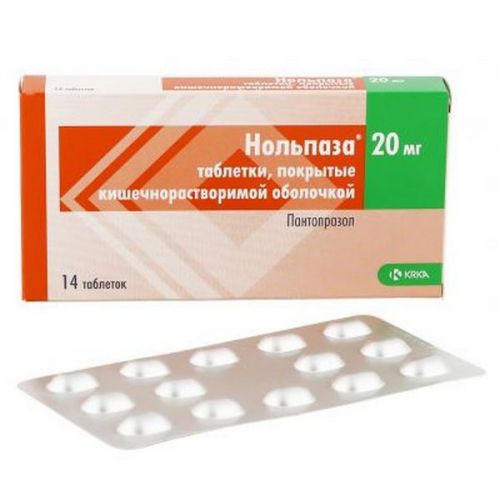
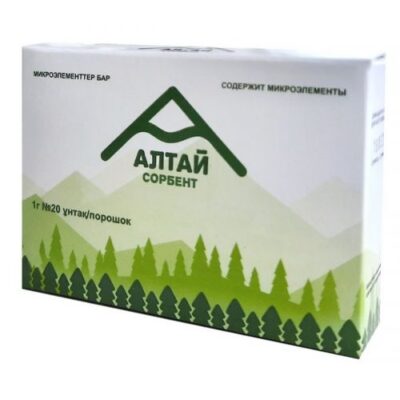
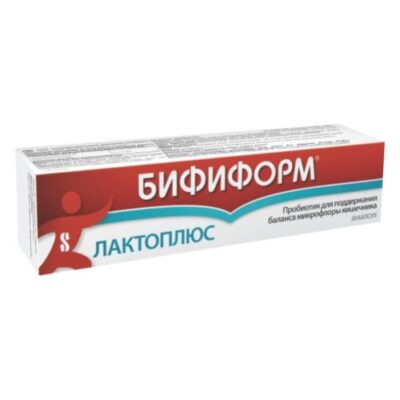

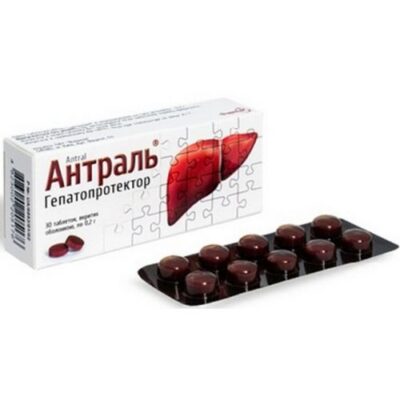
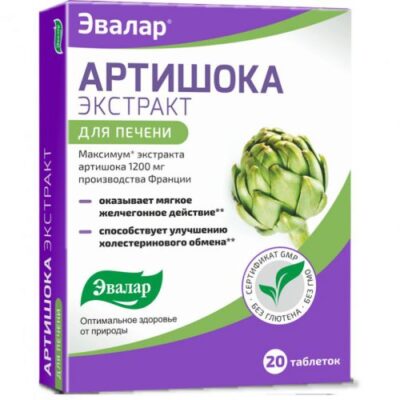
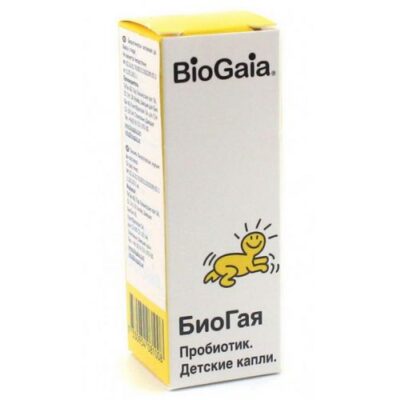

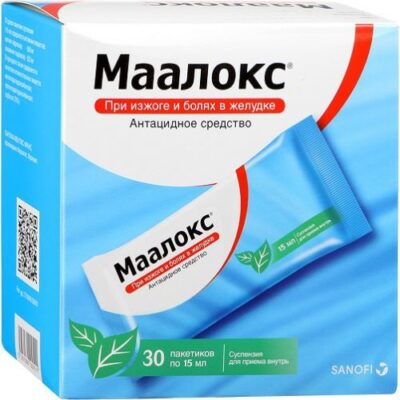
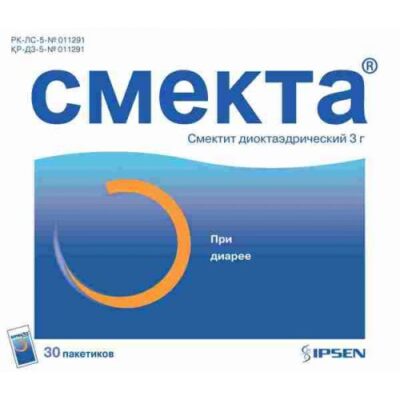
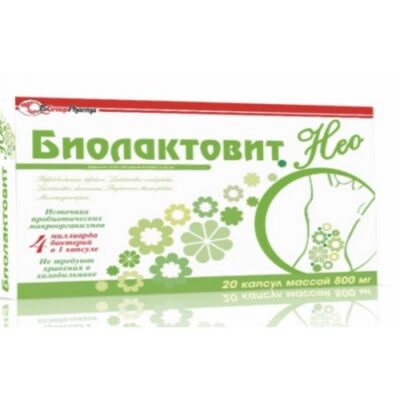






Reviews
There are no reviews yet.